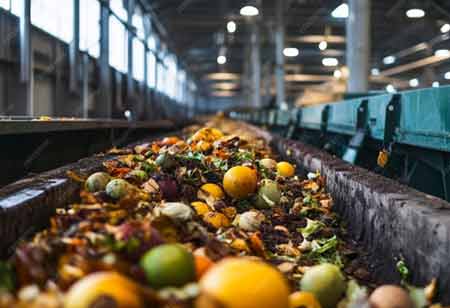THANK YOU FOR SUBSCRIBING
Be first to read the latest tech news, Industry Leader's Insights, and CIO interviews of medium and large enterprises exclusively from Food and Beverage Tech Review
Innovations in Food Delivery to Drive Engagement, Reduce Environmental Impact
The global spread of the COVID-19 virus has highlighted numerous long-standing issues in the food service business, including supply chain and personnel issues.

By
Food and Beverages Tech Review | Wednesday, November 02, 2022
Stay ahead of the industry with exclusive feature stories on the top companies, expert insights and the latest news delivered straight to your inbox. Subscribe today.
The global spread of the COVID-19 virus has highlighted numerous long-standing issues in the food service business, including supply chain and personnel issues. Also, it has demonstrated the sector's resourcefulness and flexibility during trying times. Future efforts to mitigate the pandemic's aftereffects and the ecological footprint of food production, processing, and distribution will continue to necessitate these qualities.
In today's modern world, consumers can use on-demand meal service options that use cutting-edge technology to pique their interest while also satisfying their hunger for a wide variety of nutritious and sustainably sourced menu items. For instance, one such system is the robotic meal delivery system. This year saw the introduction of the robotic delivery system to many college campuses, including the University of Denver and New Mexico State University, with plans for rapid expansion to additional areas in search of more efficient food delivery. It's more convenient for customers to receive catering services at their location rather than traveling to a central location.
Check Out This : Environmental Business Review
Any student or faculty member accessing the campus app can use their meal plan to purchase at participating dining halls or campus stores. The customer places and tracks their order through the app, than meets the robot at its delivery spot and unlocks it with their phone. Depending on the area, the delivery may cost 10 percent of the total order price in addition to the regular $1.99 fee.
How it operates
The robots use machine learning, artificial intelligence, and extremely sensitive sensors to negotiate sidewalks and obstacles and are equipped with cameras on both sides. The electric-powered, emission-free robots have a top speed of four miles per hour and can function in snow depths of up to six inches. It is possible to alert a group of human operators if the robot is stuck or tampered with from a remote location. A small on-site personnel assists with problem resolution; however, students and others frequently assist robots in difficult situations.
Added perks
An additional benefit of the contactless delivery service has been feeding students throughout the pandemic, which has helped foster social distance. Most campuses only request one meal at a time, and the robots can handle up to three orders at once, but they only clean themselves after delivering a single meal. Since this is the case, students won't have to brave the dining hall's long lines or risk contracting a disease while eating there. Instead, students can place orders whenever they like and eat wherever they choose, whether in their dorm rooms or elsewhere. Moreover, both students and other consumers have fun with the robots, whether they're just watching them move around campus or interacting with them to get food delivered.
What’s old is new
Customers are more likely to become involved if they can do so easily. The consumer has grown accustomed to using vending machines for quick snacks and drinks on the go because they've been around for a long time. Smart vending machines, however, are increasing the variety of services
available to customers in various settings, including universities, corporations, hospitals, and other public places.
Technology is transforming the food service industry and attracting customers in ways that minimize energy and material waste. Intelligent vending machines and automated delivery robots make it possible to serve buyers at all hours of the day and night, no matter where they happen. In today's era of "consumers on demand," this is of paramount importance. Furthermore, these innovative technologies promote green mobility and improve sustainability while facilitating customer interaction and nutrition.
I agree We use cookies on this website to enhance your user experience. By clicking any link on this page you are giving your consent for us to set cookies. More info







